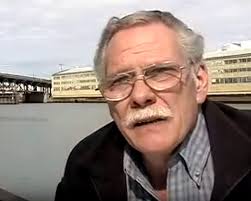by Anna Mines
April 20, 2013. Earth Day. There was no where I would have rather been than squatting in the soil on that crisp Saturday morning, pulling out buttercup after buttercup. The activity may have been mindless, but it sure proved rewarding to see the small patch cleared of invasive species, and to feel the burn in my calves and arms. The activity, so far removed from my day-to-day proceedings of work and school, reminded me of why I participated in Duwamish Alive in the first place.
I was one of the lucky students who, through the Environmental Philosophy class at the University of Washington, snagged an internship with the Duwamish River Cleanup Coalition (DRCC) as an alternative to taking the final exam. I won’t deny that the perk motivated me to take the internship, but the opportunity yielded far more than a good grade.
As an Environmental Studies major, I have taken many classes examining the theory behind environmental justice. I learned about how the decline in gray whale populations impacted the Makah people in Western Washington, and how the developed world’s coffee culture shifted the economic and social balance in countries far away. I have learned of the unstable and inequitable recovery of the New Orleans region after Hurricane Katrina, and of the minimal recovery of those effected by the Bhopal disaster in India. While I benefit greatly from the study of these events, nothing teaches me more than applying these theories to local issues.
The degradation of the Duwamish River is also environmental justice issue, but unlike the topics above, it touches a little closer to home. As a superfund site, the Duwamish River needs to be cleaned up to standards safe for wildlife and humans, and I believe it is especially important to include the community in these efforts. As an intern with the DRCC, I was fortunate to partake in the planning of Duwamish Alive for Earth Day 2013, and thus witnessed how much effort and time goes into planning a community event. Duwamish Alive is unique in that it is a coalition of many environmental organizations in the Seattle area, and works to host restoration projects on several sites all in one day. Because of this, I had the opportunity to see the unity of people from all over the greater Seattle area, whether they were in the coalition, speakers at the event, or volunteers, there for the joy of pulling weeds and planting seeds. Before my involvement with the DRCC and the Duwamish Alive coalition, I didn’t even know the Duwamish River existed – and that’s coming from a 4th generation Seattleite. But on April 20th, 2013, I sat right next to the Seattle river, working at its banks to improve the landscape for the wildlife and the residents, alongside many hardworking individuals.
While I thoroughly enjoyed the physical work of planting and pulling, I believe I learned the most from my experience behind the scenes. From coordinating the outhouse drop off, to supplying food, to advertising the event to volunteers – every little detail must be accounted for in creating a successful event that really engages the community. No act is minimal, and every person counts. As they say, the whole is greater than the sum of its parts. All of my professors in the history of me could have told me this, but I never truly understood until I experienced the theory in real life, and the Duwamish really did come to life for me that day.

